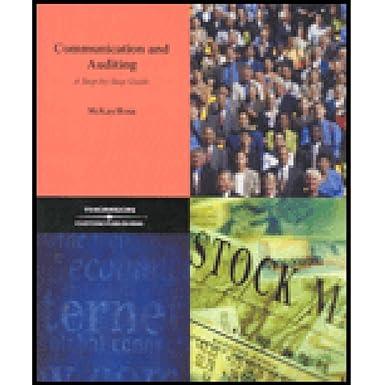Question
4. Preferred stock differs from common stock in that: A. preferred stock pays tax-free dividends. B. preferred stock has no preemptive rights or residual claims.
4. Preferred stock differs from common stock in that:
A. preferred stock pays tax-free dividends.
B. preferred stock has no preemptive rights or residual claims.
C. preferred stock has more voting power and, as such, greater control over the management of the company.
D. preferred stockholders are paid dividends before common stockholders.
5. To determine net cash provided by or used in financing activities, one must analyze the:
A. Cash account.
B. Common Stock and Retained Earnings accounts.
C. Notes Receivable and Bonds Payable accounts.
D. Interest Expense and Dividend Income accounts.
6. Which of the following statements about issued and outstanding stock is correct?
A. Outstanding stock includes stock in the hands of investors, as well as treasury stock in the hands of the corporation.
B. Issued stock equals the sum of outstanding stock and treasury stock.
C. Issued stock is equal to authorized stock.
D. Outstanding stock includes all stock issued by a corporation.
7. A company reported that its bonds with a face value of $50,000 and a carrying value of $53,000 are retired for $56,000 cash. The amount to be reported under cash flows from financing activities is:
A. ($53,000)
B. ($56,000)
C. $0. This is an operating activity.
D. ($3,000)
Step by Step Solution
There are 3 Steps involved in it
Step: 1

Get Instant Access to Expert-Tailored Solutions
See step-by-step solutions with expert insights and AI powered tools for academic success
Step: 2

Step: 3

Ace Your Homework with AI
Get the answers you need in no time with our AI-driven, step-by-step assistance
Get Started


